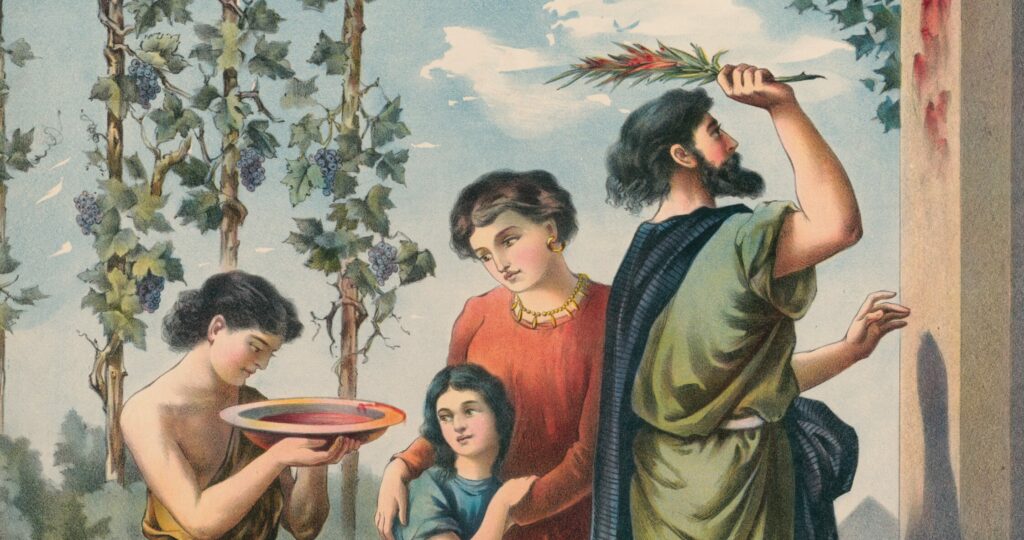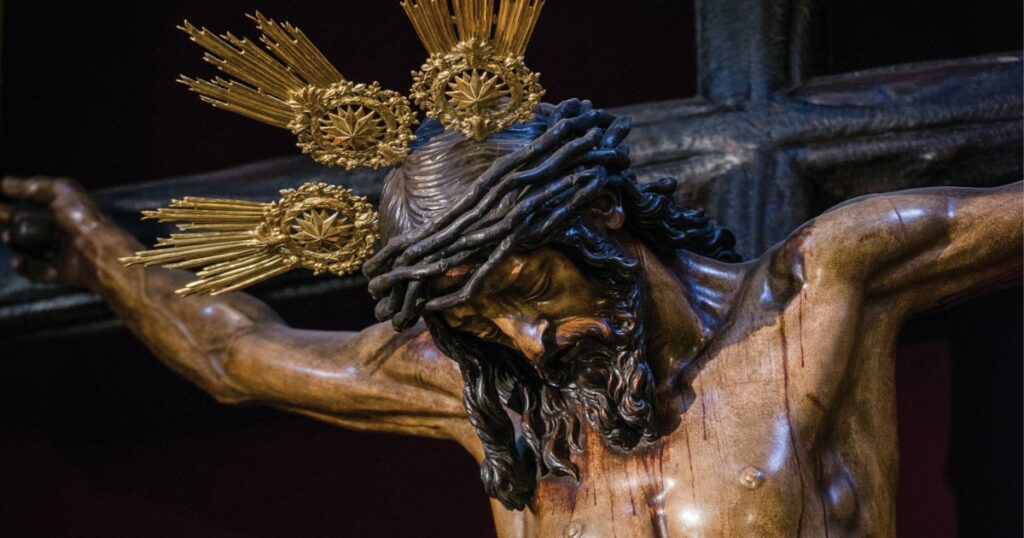By Geoffrey R. Boyle
Read Exodus 12:1–28 and John 13:1–15.
When we talk about figures in the Old Testament, we’re not just talking about things that are like other things. Nor are we imposing later things onto earlier things, as if forcing the Old Testament to say something it doesn’t want to say. Instead, when we turn to the Old Testament — the people, places, institutions and events — we’re looking at real things that actually happened, real people who actually did what is recorded, in real places that actually exist. We’re looking at history and historical events that reveal something more. These real events prefigure the reality that comes in Christ — in what He says, does and fulfills for us.
So, when we say that “the Lord’s Supper is prefigured in the Old Testament,” we mean that there are things that actually happened long ago, which point us toward something else that actually happened. Our Lord Jesus Christ gave us His body and blood to eat and to drink for our forgiveness, life and salvation. What was given on Maundy Thursday to the apostles, and to us in the Lord’s Supper, He also mysteriously gives to the saints who came long before. Martin Luther puts it this way:
We treat of the forgiveness of sins in two ways. First, how it is achieved and won. Second, how it is distributed and given to us. Christ has achieved it on the cross, it is true. But he has not distributed or given it on the cross. He has not won it in the supper or sacrament. There he has distributed and given it through the Word, as also in the gospel, where it is preached. He has won it once for all on the cross. But the distribution takes place continuously, before and after, from the beginning to the end of the world. For inasmuch as he had determined once to achieve it, it made no difference to him whether he distributed it before or after, through his Word, as can easily be proved from Scripture.
“Against the Heavenly Prophets,” AE 40:213–214
According to Luther, Christ was distributing the forgiveness He won on the cross “from the beginning to the end of the world,” even before the institution of the Sacrament. It should not surprise us, then, that we find types and reflections of the cross and the Sacrament throughout these earlier ages. Let’s take a look at some of these.
The first place to turn is the institution of the Passover, the festival that our Lord celebrated with His disciples on the night on which He was betrayed (Ex. 12:1–28). The night before the Israelites fled Egypt, families took a lamb without blemish, a year-old male. Slaughtering it at twilight, each household took some of the blood and put it upon the lintel and doorposts of their homes. Then they ate the lamb, roasted over the fire, with haste, along with unleavened bread and bitter herbs. Belts fastened, sandal-shod, with staff in hand — “It is the LORD’s Passover” (Ex. 12:11).
Attached to the sign of blood covering the home’s entrance, we hear the Lord’s word of promise: “When I see the blood, I will pass over, and no plague will befall you to destroy you, when I strike the land of Egypt” (Ex. 12:13). Word, promise, blood, lamb and meal — they’re brought together this night to prefigure another Word, Promise, Blood, Lamb and Meal. Not only do we hear John the Baptist crying out in the background, “Behold, the Lamb of God, who takes away the sin of the world!” (John 1:29). We also have St. Paul admonishing us, “Cleanse out the old leaven that you may be a new lump, as you really are unleavened. For Christ, our Passover lamb, has been sacrificed. Let us therefore celebrate the festival, not with the old leaven, the leaven of malice and evil, but with the unleavened bread of sincerity and truth” (1 Cor 5:7–8). Jesus Christ is the Lamb. His blood covers the doorposts of our hearts. His promise proclaims forgiveness, life and salvation. And the Lord offers it all at the Maundy Thursday meal at our altars every Lord’s Day.
Once they leave Egypt, the Lord prefigures the ongoing nourishment of His people through the daily provision of manna in the wilderness (Ex. 16). This fine, white, coriander-seed-like thing tasted like wafers made with honey. It arrived with the dew every morning (except the Sabbath), and Israel gathered as much as they needed. This “bread from heaven” truly sustained Israel for 40 years in the wilderness as their daily bread. Yet the meal also prefigures the regular sustenance of God’s people on Christ Himself. “Truly, truly, I say to you, it was not Moses who gave you the bread from heaven, but My Father gives you the true bread from heaven. For the bread of God is He who comes down from heaven and gives life to the world” (John 6:32–33). Manna prefigures Jesus. As He said, “I am the bread of life; whoever comes to Me shall not hunger, and whoever believes in Me shall never thirst” (John 6:35). And like the crowds, we all cry: “Sir, give us this bread always” (John 6:34)!
The figures run throughout the Scriptures. From the fruit that hangs from the tree of life in the Garden of Eden (Gen. 2:15–17) to the bread fed to Elijah by the raven (1 Kings 17:1–7), there are miraculous and saving meals scattered throughout the stories of old, each prefiguring the Lord’s grace in the Supper. Consider the bread and wine brought to the patriarch Abram after his courageous rescue of Lot (Gen. 14:18–20; Heb. 7). Then there’s the meal of hospitality that Abram quickly prepared for the three visitors whom he called “Lord” (Gen. 18:1–15). The widow of Zarephath gathered sticks to prepare her last meal with her son and die, only to find that the word of Elijah sustained her flour and oil until the drought came to an end (1 Kings 17:8–15). Isaiah gives us a vision of the eschatological banquet (Isaiah 25:6–8), and the Psalms are replete with eucharistic language, prefiguring for us a cup that truly runs over (Psalm 23:5), where we “taste and see that the Lord is good” (Psalm 34:8). For fun, you might try tracking down every time the prophets mention “grain, wine and oil” and see if you can’t find the reality that these prefigure.
But perhaps more than all the figures listed above, the most regular and consistent are those that were offered daily, weekly and annually on the altar in the tabernacle and temple. These offerings prefigure Christ the crucified. His blood made theirs effective for atonement (Lev. 17:11). Here we find offering and forgiveness, meal and fellowship, God and man reconciled.
Maundy Thursday leans most heavily on the Passover, to be sure. But behind that stands the whole sacrificial system. It’s all Christ for His children, from beginning to end. He wins the victory and we share in His meal. It’s miraculous and ordinary, both at the same time. Heaven and earth, bread from above and bread from below, wine to gladden the heart of man and carrying forgiveness of sins for the life of the world — the figures and the Sacraments both share in and deliver Christ our Lord.

This article originally appeared in the April 2025 issue of The Lutheran Witness.





